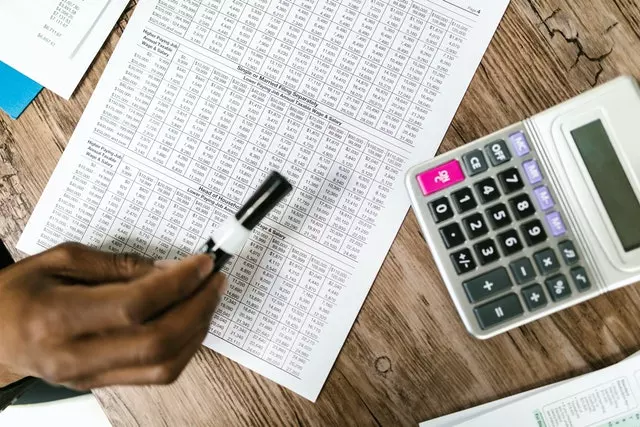Section 206AB and 206CCA – Compliance Check Functionality of Income Tax

The income tax act has laid down certain provisions to tap the non-filers of return of income. Section 206AB and 206CCA of the income tax act are prominent in this regard. Section 206AB states that in respect of amounts paid or payable to specified persons, the TDS shall be deducted at higher of the following rates:
- at twice the rate specified in the relevant provision of the Act; or
- at twice the rate or rates in force; or
- at the rate of five percent.
Further, Section 206CCA states that where the TCS is required to be collected from specified persons, it shall be collected at higher of the following rates:
- at twice the rate specified in the relevant provision of the Act; or
- at the rate of five percent.
Specified persons in both the above sections are the same and include those persons who satisfy both the following conditions:
- They have not filed their return of income for the assessment year relevant to the previous year immediately preceding the financial year in which the TDS / TCS is required to be deducted/collected and the time limit for furnishing a return of income under section 139(1) has expired; and
- The aggregate of TDS and TCS is Rs. 50,000 or more in that previous year.
For instance, for PY 2022-23, the relevant previous year would be PY 2020-21. Therefore, it should be ensured that the income tax return for PY 2020-21 (AY 2021-22) is filed. Earlier, the requirement was to file income tax returns for 2 assessment years. However, as per the recent circular, the provisions of Section 206AB and 206CCA have been amended to reduce it to one year.
Non-Applicability of Section 206AB and 206CCA
- The above provisions of Section 206AB and 206CCA are not applicable for TDS under sections 194IA, 194IB, 194M, 192, 192A, 194B, 194BB, 194LBC and 194N.
- Further, Section 206AB shall not be applicable for TDS under section 194S on the transfer of Virtual Digital Assets (VDA) to an individual or HUF whose sales or gross receipts do not exceed Rs. 1 crore in the case of business and Rs. 50 lakhs in the case of the profession during the financial year immediately preceding the financial year in which such VDA is transferred or such person does not have any income under the head PGBP.
Functionality For Section 206AB and 206CCA
The assessee responsible for deducting/collecting TDS/TCS faced difficulties in tracking such persons to whom Section 206AB and 206CCA became applicable. Therefore, the government introduced a functionality “Compliance Check for Section 206AB and 206CCA” which can be accessed from the reporting portal of the income tax department.
The tax deductors and collectors can feed the PAN, as well as bulk PANs, and the functionality will determine whether the deductee or collected is a specified person. From the FY 2022-23, the functionality will operate based on the following logic as discussed in Circular No. 10 of 2022 dated 17th May 2022:
- A list of specified persons is prepared at the start of the FY 2022-23 taking PY 2020-21 as the relevant previous year. The list will contain the names of the person who has not filed income tax returns for the PY 2020-21 (AY 2021-22) and the aggregate of TDS and TCS is Rs. 50,000 or more in the PY 2020-21.
- During the remaining financial year 2022-23, no new names will be added to the list thus relieving the taxpayer to check the name of specified persons multiple times during the financial year.
Removal of the names of the specified person from this list will be done if any of the following conditions are satisfied:
| Reason for Removal | Date of Removal |
|---|---|
| If the specified person files his income tax return for AY 2021-22 during the FY 2022-23 | On the date of filing of the valid income tax return during the FY 2022-23 |
| If the specified person files the income tax return for AY 2022-23 |
On the due date for filing the income tax return for AY 2022-23 or on the date of actual filing of a valid return, whichever is later. |
| If the aggregate TDS and TCS in PY 2021-22 is less than Rs. 50,000 | On the first due date u/s 139(1) in FY 2022-23 i.e., 31st July 2022 |
| Belated and revised TDS and TCS returns for the relevant financial year that are filed during the FY 2022-23. | On regular basis |
The above list will be freshly drawn at the start of each financial year. Also, as per Sections 206AB and 206CCA, the specified persons shall not include non-residents not having a permanent establishment in India. Tax deductors and collectors are advised to carry out necessary due diligence in respect of non-residents as the functionality does not have the visibility of non-residents having PE in India. Therefore, it is probable that such non-residents having PE in India may not get reflected in the list.
How to Use the New Compliance Check Functionality?
While the logic has been clear from the above discussion, the procedural aspect of using this new compliance check functionality was discussed in Notification No. 01 of 2021 dated 22nd June 2021 as under:
Registration
The tax deductors and collectors shall get registered on the compliance check portal by following the below steps:
- Login to the income tax portal using the login credential of TAN.
- Click on the ‘Pending Actions’ tab and then ‘Reporting Portal’.
- In the Form Type, select the ‘Compliance Check (Tax Deductor & Collector)’
- Provide the details of the principal officer by clicking on the ‘Add Principal Officer’ tab. Principal officers are the authorized persons of the tax deductor/collector to use the Compliance Check Functionality on the reporting portal.
- After the registration request is submitted, an email notification will be shared with the principal officer along with the ITDREIN details and login credentials.
Accessing the Functionality
Principal officers will be able to use the functionality after login into the reporting portal. Once logged in, the link to the Compliance Check functionality will appear on the home page of the reporting portal.
Two modes are available in the Compliance Check Functionality i.e., ‘PAN Search Mode’ and ‘Bulk Search Mode’.
1) PAN Search Mode
Under this mode, a single PAN and the captcha shall be entered at a time. The following shall be the search result:
- Financial Year: Current Financial Year
- PAN
- Name: Masked name as per PAN
- PAN Allotment Date
- PAN-Aadhaar Link Status: The response options available are:
- Linked
- Not Linked
- Exempt (PAN is exempted from PAN-Aadhaar linking requirement as per Notification No. 37/2017 dated 11th May 2017)
- Not Applicable (PAN belongs to the non-individual assessee)
- Specified Person u/s 206AB and 206CCA: The response options shall be:
- Yes (PAN is a specified person as per Section 206AB / 206CCA as of date)
- No (PAN is not a specified person as per Section 206AB / 206CCA as of date)
2) Bulk Search Mode: This mode involves the following steps:
- Preparation of request (input) file containing PANs: CSV template for entering the PANs can be downloaded by clicking on the ‘Download CSV template’. PAN shall be entered in the CSV sheet. A maximum of 10,000 PANs can be entered in a single file.
- Upload the Input CSV file: Click on the ‘Upload CSV’ button and upload the CSV file. The status will be reflected as ’Uploaded’.
- Download the Output CSV file: After processing, the output CSV file will be available for download and the status will change to ‘Available’. The file will contain all the details as available in the ‘PAN Search Mode’. After the file is downloaded, the status will change to ‘Downloaded’. The download link is valid for 24 hours after which it will expire, changing the status to ‘Expired’.
In a Nutshell
The above functionality of the compliance check for Section 206AB and 206CCA eased the compliance burden on the tax deductors and collectors. However, the government noted that some of the deductors, as well as collectors, still asked for evidence of returns filed from the deductees / collectees. This defeats the entire purpose of the functionality and might cause genuine hardships to the taxpayers. Therefore, the government has advised using the above user-friendly functionality of the compliance check for Section 206AB and 206CCA.
In case of any query, please feel free to contact the ASC Group.
Also Read: A Complete Guide to Secretarial Compliance and Secretarial Audit

Leave a Reply